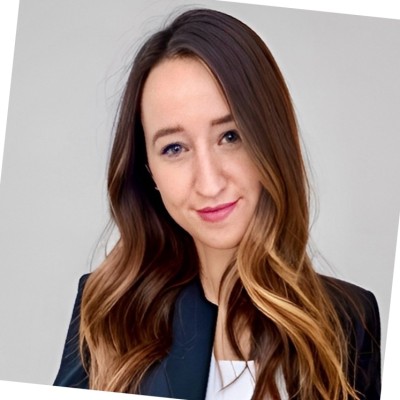Leveraged screening and segmentation to recruit Jira and Confluence users who also use assistive technology
Ran a series of 1:1 live usability tests to improve accessibility of core features
Turned inclusive research from a nice-to-have into a product strategy driver



Rebecca Topps, Senior Researcher at Atlassian
Atlassian is a software company on a mission to provide collaborative, agile tools for high-performing teams. Keeping information accessible and streamlined is at the heart of what Atlassian does. As such, they center accessibility research in their approach to product design too.
We spoke with Senior Researcher, Rebecca Topps, during a recent webinar on building an accessibility research panel.
For Atlassian, inclusivity is fundamental to product development and design. This means embedding accessibility into the research process, not tacking it on at the end.
The challenge: how to reach and thoughtfully recruit people with disabilities for better accessibility research and usability testing, at scale.
Atlassian needed a reliable way to:
To add one more hurdle, they wanted to move fast. Like, fast enough to keep up with their product sprints.
This was a challenge because the Atlassian team wanted to identify customers who have access needs externally. This meant reaching out to them where they naturally congregate in accessibility communities, online forums, and social media—then, creating a centralized place to invite, screen, segment, manage, and incentivize these folks.
“Accessibility is the process of designing products, apps, services, and environments that are usable to everyone, including people with disabilities. Accessibility research is an important component of this, and it involves integrating the needs of people with disabilities into research, usability testing, and design processes.” – Rebecca Topps, Senior Researcher at Atlassian
Led by Senior Researcher, Rebecca Topps, Atlassian used User Interviews’s Research Hub to build a custom accessibility panel with precise screening and segmentation to meet the needs of their diverse customer base.
Instead of focusing on specific diagnoses during recruitment, Rebecca and her team relied on screening questions that identified usage of assistive technologies. This facilitated a respectful environment that centered privacy and inclusion, and kept the focus on how users are engaging with a product rather than why they are using ATs.
Rebecca designed their custom screeners to highlight behavior – like using the JAWS screen reader or keyboard-only navigation – and underwent both manual and automated accessibility testing to ensure a seamless experience across a range of assistive technologies.
Atlassian conducted research remotely to reduce participation barriers, with accommodations provided as needed. Once the panel was live, custom filtering, labels, and participant segmentation allowed researchers to match users with specific product teams based on tech usage, Atlassian products used, and support needs. As they were sourcing participants from multiple channels, having one streamlined home base to manage all participants was key.
“It wasn't just about what needed to be fixed, but [Research Hub] also showed us how things had improved for different assistive technology users” – Rebecca Topps, Senior Researcher at Atlassian
Creating a dedicated accessibility panel resulted in:
“[Research Hub] helps us to streamline operations to run accessibility research across different apps. It helped me and my research operations teammates quickly access Atlassian customers who also use assistive technology and build that panel to start doing this research. It also helped us to present our research findings to stakeholders, and get buy-in for fixing, or resolving, those issues that surfaced from the research.” – Rebecca Topps, Senior Researcher at Atlassian
The team's research has truly shifted how products get built.
Atlassian’s approach to panel management shows how scalable systems, inclusive design practices, and thoughtful research recruitment can make accessibility a driver of product innovation. If you ask Rebecca, accessibility isn’t just compliance, it’s core UX.



Schedule your demo and see us in action today.